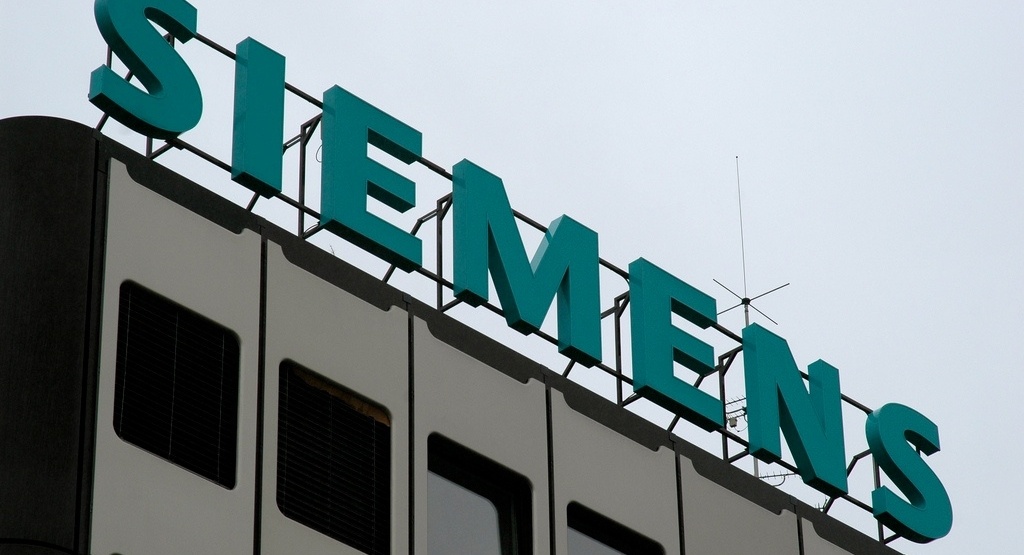
Another giant of industry has gone all-in on advanced energy, this one a company that will be on both sides of the transactions. In an op-ed in the New York Times published last week, CEO John Kaesser announced that Siemens A.G. would incorporate a variety of advanced energy generation technologies and energy efficiency measures to completely eliminate or offset CO2 emissions by 2030. This would make Siemens both a supplier of advanced energy products and a customer making full use of them to meet the company’s energy needs. Talk about putting your money where your mouth is.
“We are committing to cut our global carbon footprint in half by 2020 and to make our global operations carbon neutral by 2030,” Kaesser wrote in the Times. “We’re targeting facilities, vehicles and fuel. We will increase our use of distributed energy systems at our own sites — by combining solar panels, wind and highly efficient gas turbines with intelligent energy management, smart grids and energy storage solutions.”
Siemens, an AEE Member, is a German multinational manufacturing company and the largest engineering company in Europe. This industrial conglomerate employs more than 340,000 people, does business in more than 200 countries, and operates nearly 300 major production sites. The company plans to invest more than $110 million in advanced energy solutions at offices and factories in the United States, Germany, China, Brazil and Britain.
Siemens joins several leading companies, including Walmart and Microsoft, that have recently taken decisive action to incorporate advanced energy on a large scale. But Siemens may be the first to capitalize on its own advanced energy products in a way that shows the value for others. “We hope to demonstrate to other companies that cutting your carbon footprint is not only possible, but profitable,” Kaesser wrote.
Maybe Kaesser can have a chat with Matthias Müller, the new CEO of Volkswagen, about what it means to commit to advanced energy. If you’ve been paying attention to the news, you are well aware of what some are calling DieselGate, or the deliberate obfuscation of emissions on the part of the German automobile manufacturer. Briefly, the automobile manufacturer cheated on emissions tests by having two settings for emission controls: one when the steering wheel was not engaged (i.e., during testing), and one when the steering wheel was engaged (i.e., while on the road). The issue could affect as many as 11 million vehicles, and the company has set aside 6.5 billion euros to deal with the crisis, though that amount may “multiply rapidly,” according to CNN.
This week West Virginia became the first state to begin bringing legal action against the company. Attorney General Patrick Morrisey, previously famous for leading the multi-state lawsuit against EPA’s Clean Power Plan, announced plans to seek restitution for West Virginians who bought the affected vehicles, claiming that each is owed the $6,855 extra that they paid for the clean diesel engines, plus $5,000 in civil penalties.
Volkswagen, along with other European automakers that have not been implicated in the emissions scandal, had been capitalizing on a substantial European clean car market, and a growing U.S. market. According to AEE’s Advanced Energy Now 2015 Market Report, clean diesel vehicles was the second largest product category in advanced transportation, valued at $5.2 billion worldwide in 2014. The implications of the VW scandal for the broader market for these high fuel-efficiency vehicles is not yet clear.
By now, readers of this blog should know that New York’s Renewing the Energy Vision (REV) is a game-changing regulatory proceeding that intends to fundamentally change the utility business model in the state, with ramifications far beyond the Empire State. But understanding exactly what it’s about is not easy. A great place to start is the new two-part explainer by David Roberts of Vox, which details what REV is and what to look for as it progresses.
Part One, “New York’s revolutionary plan to remake its power utilities,” covers the basic challenge of utility business model reform, how REV is trying to address it with a new regulatory framework that creates a market for distributed energy resources (DER), and the different players involved (including AEE). Roberts writes:
“If New York succeeds, REV could spark a wave of utility reform, with salutary effects on US carbon emissions (and the success of President Obama's Clean Power Plan). If it blows up or falls apart, it could scare other states away from restructuring, just like Enron did in the early 2000s. It's arguably the most important clean energy policy initiative in the country today.”
Part 2, “New York wants to create competitive electricity markets. But who should run them?,” goes deeper into how the marketplace for DER products and services should operate. While some, like former FERC Commissioner John Wellinghoff, argue that a new ISO-like body, separate from the utilities, should operate the marketplace in order to avoid conflicts of interest, in REV the New York Public Service Commission has proposed that utilities manage the “distributed system platform” (DSP), with strict rules limiting the services they offer to the monopoly realm, while preserving a competitive marketplace for DER services and products. “Will it work? Will any of REV work? No one knows!” writes Roberts. “But there are lots and lots of people watching closely and taking notes. The stakes could not be higher.” Keep track of REV yourself in DocketDash, part of PowerSuite from AEE, which makes it easy to track regulation in all 50 states.
